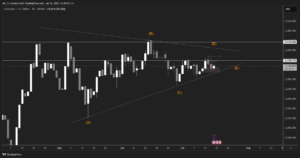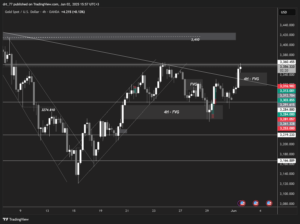Weekly Fundamental Reports in the US
In the US, all eyes will be on the Consumer Price Index for the month of February, released on the 10th of March. Published by the US Department of labour statistics, this report is a measure of price movements by the comparison between the retail prices of a representative shopping basket of goods and services.
A reading below 0.5% will be considered bearish for the USD; however, a reading above this estimated number will be considered bullish for the USD. Another important report for traders and for its impact on the market is the Michigan Consumer Sentiment Index. This report released by the University of Michigan is a survey of personal consumer confidence in economic activity.
Consumer energy can translate into greater spending and faster economic growth. A stronger labour market helps turn the Fed hawkish. Actual figures beating 61.3 tend to be USD bullish.
Weekly Fundamental Reports in the Eurozone
In the Eurozone, all eyes will be on the ECB Deposit Rate Decision, which will be released on Thursday. It is the interest rate paid on the surplus liquidity that credit institutions may deposit overnight in an account with a national central bank that is part of the Euro system, the deposit rate is announced by the European Central Bank.
If the ECB is hawkish about the inflationary outlook of the economy and raises interest rates, it seems bullish for the EUR. Likewise, if the ECB has a dovish view and keeps or cuts the interest rate, it is seen as negative for the EUR.
Weekly Fundamental Reports in Canada
In Canada, all eyes will be on the Net Change in Employment report and the Unemployment rate report, which will be released on Friday. The Net Change in Employment report released by Statistics Canada is the measure of the change in the employment number.
A reading above 160k will be considered bullish for the CAD, while a low reading is seen as negative. In addition, the Unemployment rate report is the number of unemployed workers divided by the total civilian labour force a reading below 6.2% will be seen as positive for the CAD, while an increase is seen as bearish.
Russia-Ukraine Crisis Effects on The Market
As the Russia-Ukraine crisis is far from over, according to Vladimir Putin’s statement, Russia’s invasion of Ukraine will proceed until they surrender. The Eurozone is more exposed than any other area, and the safe-haven dollar is in high demand. Being aware of the counter traders, shorting EURUSD is, therefore, a good trade.
The same goes for gold and the “black gold”. The precious metal is used as a hedge against inflation, and when a crisis like this happens it appeals to traders to have no doubt about going long on XAU/USD. Moreover, where the world’s recovery from covid WTI supply was not up to speed, and as Russia produces 10% of the world’s “Black Gold”, the trend of WTI is clear to the upside.
Moreover, Russia warned that oil price could surge to $300 per barrel and it might close the main gas pipeline to Germany if the West halts imports.
Technical outlook
WTI:

Before reversing from $125.00, black gold rallied to the highest level ever since 2008. This level was attained after Germany refused to follow in the footprints of the US and prohibit imports of Russian oil.
However, during Tuesday’s early session WTI was down to 0.3% and reach around the $117.30 area. Bulls need to surpass $122.00 to open 14-years old resistance at $147.30. Meanwhile, a pullback that moves below $114.50 will challenge the next support from February 25th near the 111.80 mark, a break below this level target the psychological magnet at the $100 area.
USD/CAD:

The Canadian dollar was weighed down by an intraday slide in crude oil prices. A modest pullback in crude oil prices from a 14-year high will provide a bearish movement for the USD/CAD since WTI and this major have a negative correlation.
On the bull side, a break above 1.2875 will be followed by a 1.2900 round figure, a break above this level could further extend the momentum towards a 2021 swing high around the 1.2965 area. On the flip side, 1.2780 is protecting the immediate downside at mid-1.2700. a break below 1.2750 will be in favour of bearish traders and drag the price back toward the 1.2700 round figure. A break below this level will target the next support at 1.2650.
XAU/USD:

The renewed upside could test the resistance at $2,005. If the bulls continue the next target of the gold will be near the $2,034 area. On the flip side, a break below $1.981 will target Monday’s low at $1.961.
EUR/USD:

The current bounce is likely to be limited, resistances are set at 1.0931; 1.0969; 1.1000; and 1.1040. A break above the last resistance will ease the bearish pressure. Meanwhile, the pair is targeting the next support level at 1.0806; 1.0766; 1.0727; and 1.0700.
Disclaimer: This article is not investment advice or an investment recommendation and should not be considered as such. The information above is not an invitation to trade and it does not guarantee or predict future performance. The investor is solely responsible for the risk of their decisions. The analysis and commentary presented do not include any consideration of your personal investment objectives, financial circumstances or needs.





